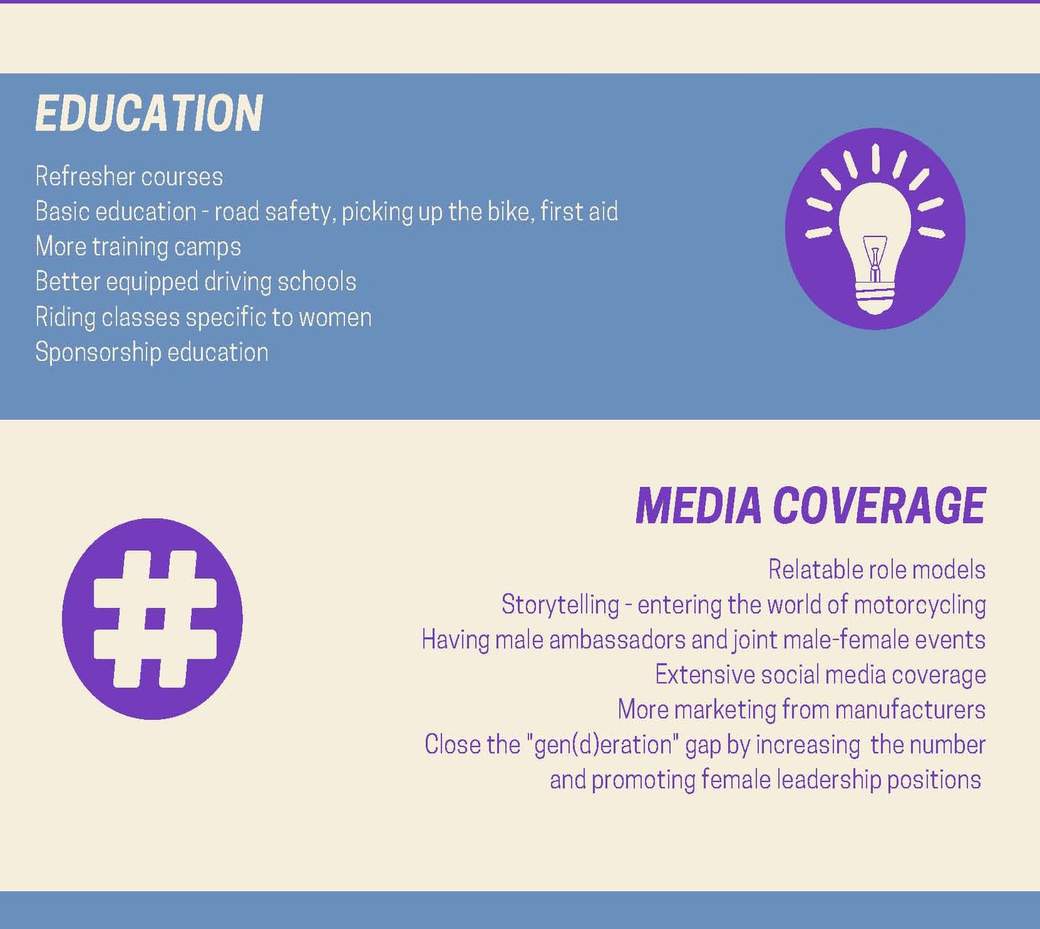The FIM Women in Motorcycling Commission (CFM) conducted a survey asking over 1500 females who compete, tour and work in motorcycling what were the ways CFM could encourage women in the sport, increase their participation, thus having a positive impact on gender equality.
The sample population, representing all Continental Unions and 47 nationalities, aged from under 18 to 65+ mostly compete in motocross (24.91%) followed by other disciplines, notably, enduro (14.88%) and trial (11.07%). According to the survey, riding is what motivates both women in competitions and touring (respectively 33.57% and 41.30% of respondents). When it comes to competing, 60.73% say it doesn’t matter whether they compete with men or women, while 9.45% would prefer to engage in a contest specifically against men.
Having children has no impact on their possibility to ride, claim 68.86% motorcycle moms. While not being the biggest impediment for riders, 6.69% respondents from racing and 6.81% from touring say their gear is a disruptive element. Although the numbers seem relatively low, finding correct, suitable store-bought gear is a struggle for 42.98% respondents. This was also highlighted in the comments, many complained about gear being unaffordable, not flexible enough to fit curvier bodies and, overall, not versatile and usually presented in gender-bias colours. Same goes for the weight and size of the motorcycles, which inconveniences 16.93% touring and 10.63% competition riders from our sample. Lower and lighter motorcycles with the same power were called upon in the comments, as well as, generally, better support from the manufacturers.
When it comes to working in the industry, CFM was pleased to see that 29.27% of respondents were verysatisfied and 45.53%satisfied with their professional career, despite having to play hardball with their male counterparts as 56.10% respondents stated it was more difficult to get their job as a woman. With 57.26% claiming there was no salarydifference compared to their male colleagues, unfortunately, 39.50% also said they didn’t have access to samecareer opportunities as men. The respondents suggested having more women in leadership positions as a way of mentoring and creating awareness. This would also help close the “gen(d)eration” gap, that currently exists, as young female talents are not particularly motivated to work for the older mostly-male commandership. Increasing gender equality education for men and women across the industry was also strongly suggested.
FIM Communications



